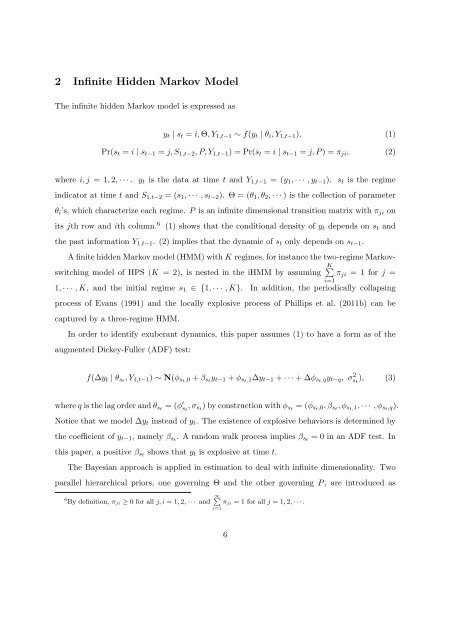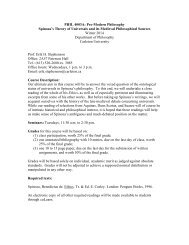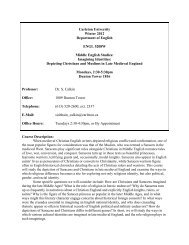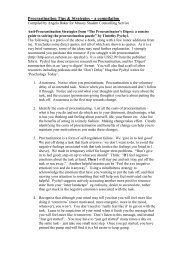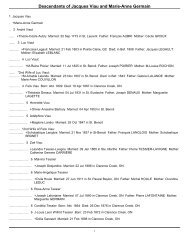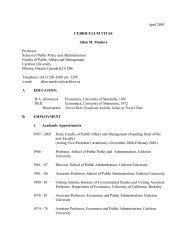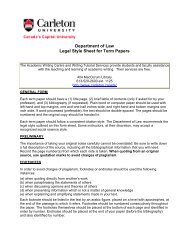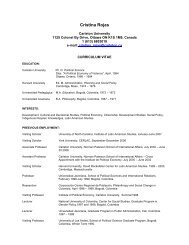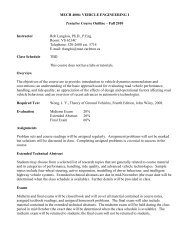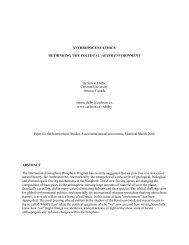Identifying Speculative Bubbles with an Infinite Hidden Markov Model
Identifying Speculative Bubbles with an Infinite Hidden Markov Model
Identifying Speculative Bubbles with an Infinite Hidden Markov Model
You also want an ePaper? Increase the reach of your titles
YUMPU automatically turns print PDFs into web optimized ePapers that Google loves.
2 <strong>Infinite</strong> <strong>Hidden</strong> <strong>Markov</strong> <strong>Model</strong>The infinite hidden <strong>Markov</strong> model is expressed asy t | s t = i, Θ, Y 1,t−1 ∼ f(y t | θ i , Y 1,t−1 ), (1)Pr(s t = i | s t−1 = j, S 1,t−2 , P, Y 1,t−1 ) = Pr(s t = i | s t−1 = j, P ) = π ji , (2)where i, j = 1, 2, · · · . y t is the data at time t <strong>an</strong>d Y 1,t−1 = (y 1 , · · · , y t−1 ). s t is the regimeindicator at time t <strong>an</strong>d S 1,t−2 = (s 1 , · · · , s t−2 ). Θ = (θ 1 , θ 2 , · · · ) is the collection of parameterθ i ’s, which characterize each regime. P is <strong>an</strong> infinite dimensional tr<strong>an</strong>sition matrix <strong>with</strong> π ji onits jth row <strong>an</strong>d ith column. 6 (1) shows that the conditional density of y t depends on s t <strong>an</strong>dthe past information Y 1,t−1 . (2) implies that the dynamic of s t only depends on s t−1 .A finite hidden <strong>Markov</strong> model (HMM) <strong>with</strong> K regimes, for inst<strong>an</strong>ce the two-regime <strong>Markov</strong>switchingmodel of HPS (K = 2), is nested in the iHMM by assuming K π ji = 1 for j∑=1, · · · , K, <strong>an</strong>d the initial regime s 1 ∈ {1, · · · , K}. In addition, the periodically collapsingprocess of Ev<strong>an</strong>s (1991) <strong>an</strong>d the locally explosive process of Phillips et al. (2011b) c<strong>an</strong> becaptured by a three-regime HMM.In order to identify exuber<strong>an</strong>t dynamics, this paper assumes (1) to have a form as of theaugmented Dickey-Fuller (ADF) test:i=1f(∆y t | θ st , Y 1,t−1 ) ∼ N(ϕ st ,0 + β st y t−1 + ϕ st, 1∆y t−1 + · · · + ∆ϕ st, qy t−q , σ 2 s t), (3)where q is the lag order <strong>an</strong>d θ st = (ϕ ′ s t, σ st ) by construction <strong>with</strong> ϕ st = (ϕ st ,0, β st , ϕ st, 1, · · · , ϕ st ,q).Notice that we model ∆y t instead of y t . The existence of explosive behaviors is determined bythe coefficient of y t−1 , namely β st . A r<strong>an</strong>dom walk process implies β st = 0 in <strong>an</strong> ADF test. Inthis paper, a positive β st shows that y t is explosive at time t.The Bayesi<strong>an</strong> approach is applied in estimation to deal <strong>with</strong> infinite dimensionality. Twoparallel hierarchical priors, one governing Θ <strong>an</strong>d the other governing P , are introduced as6 ∑By definition, π ji ≥ 0 for all j, i = 1, 2, · · · <strong>an</strong>d ∞ π ji = 1 for all j = 1, 2, · · · .i=16


